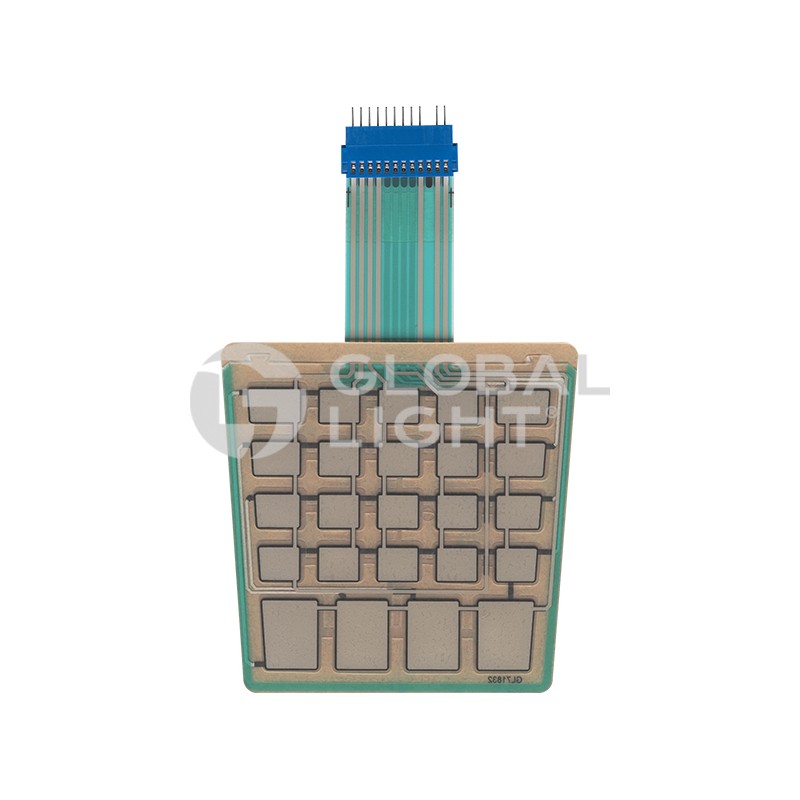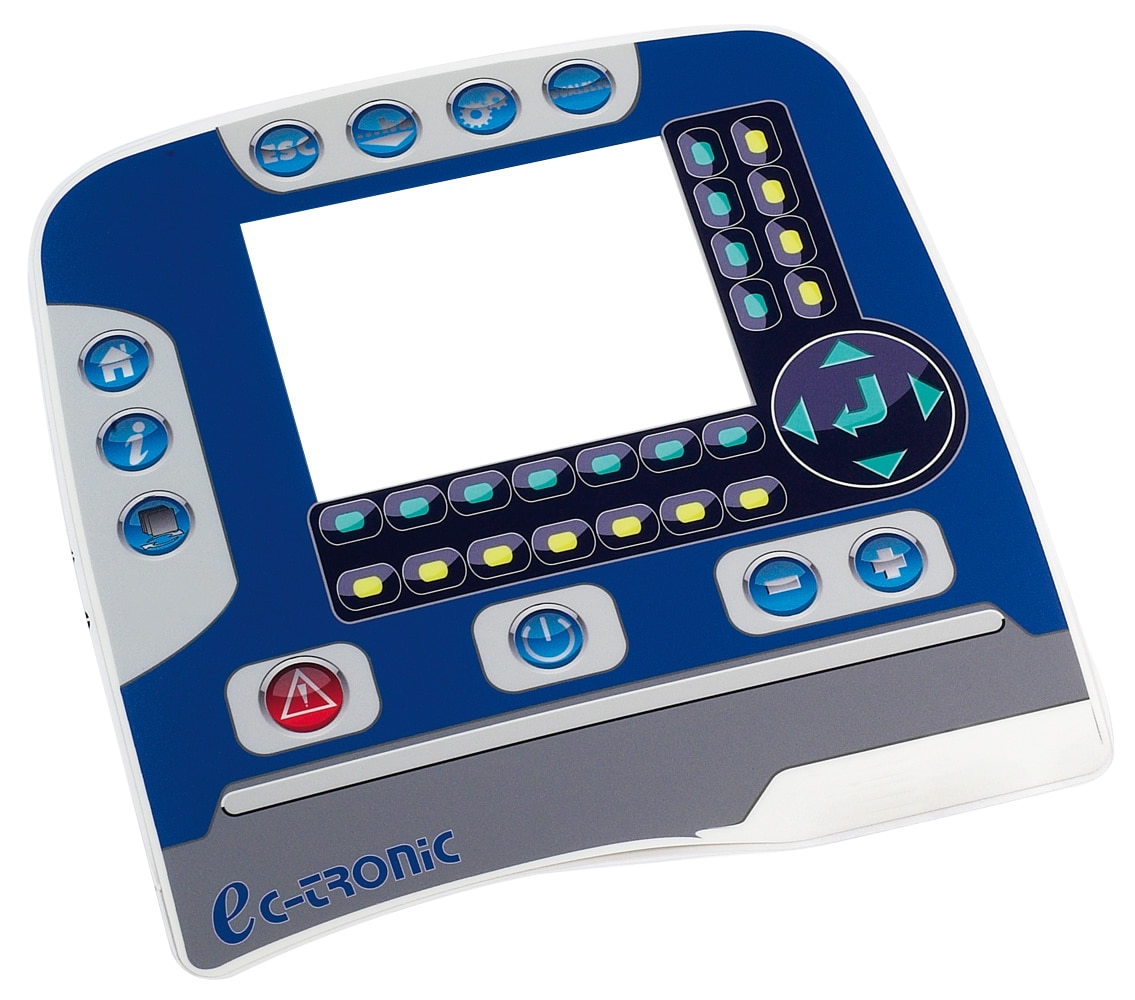Membrane Switch: A Comprehensive Guide to Its Uses and Applications
Wiki Article
Recognizing Membrane Switches Over: The Secret to Resilient and Dependable Controls

What Are Membrane Switches?
Membrane switches are a sophisticated service in the world of individual interface modern technology, incorporating capability and design perfectly. These gadgets offer as a user interface in between customers and digital systems, integrating several components into a small style. Typically constructed from flexible, thin layers of materials, membrane layer buttons are created to react to touch, enabling customers to interact with equipment and digital tools successfully.The main aspects of a membrane switch consist of a published circuit layer, visuals overlay, and a spacer layer that stops unintentional activation. The graphic overlay can be tailored to show brand identity or user choices, improving appearances while making certain use. Membrane switches are generally made use of in different applications, including clinical gadgets, consumer electronic devices, and commercial equipment, owing to their resilience and resistance to ecological aspects such as wetness and dust.
Among the essential benefits of membrane layer switches is their capacity to endure wear and tear, making them excellent for high-traffic atmospheres. Additionally, they are light-weight and need marginal area, allowing for cutting-edge designs in item advancement. On the whole, membrane switches over represent a practical and effective choice for contemporary electronic interfaces, weding innovation with user-centric layout principles.
Just How Membrane Changes Job
The operation of membrane layer switches hinges on a straightforward yet efficient device that translates individual input right into electronic signals. These buttons are composed of multiple layers, normally consisting of a visuals overlay, a spacer layer, and a circuit layer. When an individual presses the button, the top layer warps, allowing a conductive aspect in the circuit layer to reach a corresponding conductive pad on the bottom of the visuals overlay. This contact closes the circuit and sends a digital signal to the tool, indicating that the switch has actually been turned on.The layout of membrane layer buttons can differ, yet they frequently integrate domes or responsive aspects to give responses to the user, enhancing the overall experience - membrane switch. The materials used in membrane switches, such as polyester or polycarbonate, add to their resilience and resistance to environmental elements, including wetness and dust. The printed circuits are usually encapsulated, which safeguards them from wear and tear over time.
Benefits of Membrane Buttons

Additionally, membrane switches are understood for their longevity. Constructed from robust materials, they are resistant to dust, dampness, and physical wear, which dramatically expands their lifespan compared to conventional mechanical switches. This sturdiness makes them especially appropriate for high-traffic atmospheres and applications needing durability.
Another significant benefit is the convenience of cleansing and upkeep. The smooth surface of membrane switches minimizes dirt build-up and is commonly image source invulnerable to spills, making them suitable for settings that require frequent sanitization.
In addition, membrane layer switches offer a structured account, causing a thinner design that can be incorporated into numerous tools without adding bulk. This attribute not only enhances the visual charm but additionally adds to a much more ergonomic item layout.
Applications of Membrane Buttons
User-friendly and functional, membrane click site buttons discover applications throughout a large range of sectors, including medical gadgets, consumer electronic devices, and industrial tools. In the medical area, these switches are integral to gadgets such as analysis devices, patient tracking systems, and mixture pumps, where dependability and ease of cleansing are crucial. Their capacity to stand up to harsh atmospheres and maintain functionality makes them ideal for such applications.
In customer electronics, membrane switches are made use of in products like microwaves, washing makers, and remotes - membrane switch. Their sleek style permits intuitive individual interfaces, improving the total user experience while offering toughness and resistance to tear and use
Commercial tools also takes advantage of membrane buttons, specifically in control panels for equipment and automation systems. These buttons offer security versus dust and wetness, making sure regular efficiency in challenging environments. Moreover, their adjustable attributes permit suppliers to customize them to specific operational needs, enhancing efficiency click this link and functionality.
Selecting the Right Membrane Switch
When selecting a membrane button, it is vital to think about numerous variables that affect performance and suitability for specific applications. The key factors to consider include environmental problems, responsive comments, resilience, and design requirements.
First, examine the operating atmosphere; switches revealed to wetness, chemicals, or extreme temperature levels need particular materials to make certain durability and functionality. Next off, examine the need for responsive comments. Depending on customer interaction, some applications might take advantage of a tactile action to verify activation, while others may like a non-tactile design for visual reasons.
Durability is an additional vital factor; membrane layer switches need to be developed to withstand regular use, effects, and abrasion. Ensure the picked switch can sustain the expected lifecycle, specifically in high-usage situations.

Conclusion
In final thought, membrane layer switches serve as essential elements in the style of trusted and durable control systems across different sectors. The versatility of membrane changes permits for customized solutions that fulfill specific operational requirements, enhancing their value in modern technology.
Membrane changes represent an essential facet of modern interface design, blending functionality with resilience in different applications.Membrane switches are an advanced service in the realm of individual interface innovation, integrating performance and style effortlessly. Normally created from adaptable, slim layers of products, membrane switches are developed to react to touch, enabling customers to connect with equipment and digital gadgets successfully.
The style of membrane switches can differ, yet they commonly integrate domes or tactile elements to provide feedback to the customer, boosting the general experience.In conclusion, membrane switches over offer as vital elements in the design of sturdy and trusted control systems across various sectors.
Report this wiki page